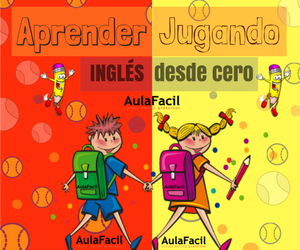Into
“Into” es una preposición. A continuación analizamos su uso.
1.- Preposición de lugar
1.1.- Movimiento: en, dentro de (hacia el interior de un lugar / objeto)
The girl jumps into the lake
Its raining. Kids! come into the house
The dog jumped into the swimming pool
I put the pizzas into the fridge
The robber got into the bank
I poured milk into the cup
I drove the motorcycle into the garage
The kid threw his toy into the fire
Mary put the roast into the oven
He pours tea in the cup
1.2.- Dirección: en dirección a un lugar / objeto
I felt really scared when the dog looked straight into my eyes
It was funny watching the cat gazing into the mirror
The bus crushed into a fence
Yo must speak into the microphone
The mother looked into the bedroom to see her baby
This road leads into the city centre
2.- Preposición de tiempo: entrar dentro de un periodo
The cocktail party continued well into the night
The general election took place well into the year (bien avanzado el año)
My dad is well into his sixties
3.- Otros significados
3.1.- Transformar, cambiar de condición
Their friendship turned into hatred
He turned the old car into a very fashion one
The football match turned into a battle
3.2.- Divisiones: entre
Divide 12 into 3
12 into 3 goes 4
3.3.- Estar muy interesado en algo, dedicarse a algo
My brother is into sport (es un gran aficionado al deporte)
My father went into business with his brother
I am into italian food (soy un fan de la comida italiana)
Peter is into rock & roll
When I finished my studies I went into banking
3.4.- Incluir, pasar a formar parte
My son was hired into that company
Switzerland never entered into the EU
The fiscal incorporated his conclusions into the final document
3.5.- Traducir a otra lengua
I had to translate this article into French
That film wasn’t dubbed into Italian
Diferencias
4.1.- “Into” vs “In”
“Into” se utiliza con verbos de movimiento expresando tanto la dirección como el resutado de dicho movimiento.
I put the wallet into my pocket
The car fall into the river
Liz jumped into the swimming pool
“In” se puede utilizar tanto con verbos de movimiento como con verbos que no expresan movimiento sino posición.
Con verbos de movimiento ambas preposiciones son sinónimas si bien “Into” acentúa la idea de desplazamiento:
I put the wallet into my pocket / I put the wallet in my pocket
The car fall into the river / The car fall in the river
Liz jumped into the swimming pool / Liz jumped in the swimming pool
He threw the ball into the basket / He threw the ball in the basket
Con verbos de posición en cambio tan sólo se puede utilizar “In”:
I study in my bedroom (NO: I study into my bedroom)
The coins are in the box (NO: The coins are into the box)
I left the ball in the basket (NO: I left the ball into the basket)
4.2.- “Into” vs “In to”
Hay que diferenciar la preposición “Into” de la combinación “In to”.
“In” puede ver formar parte de un phrasal verb. Los phrasal verb son combinaciones de verbo + preposición que tienen un significado propio diferente a la suma de los significados individuales de sus componentes:
To break in: forzar la entrada, entrar sin permiso
To hand in: entregar
To give in: entregar, rendirse, ceder
To cave in: ceder
To dive in: bucear
…
Cuando estos “phrasals verb” van seguidos de “to” hay que mantener separados “in to” ya que “in” forma parte del “phrasal verb”:
En estas oraciones “To” puede funcionar como preposición, indicando el destino:
Ejemplo:
The robbers broke in to my house last night
“broke in”: phrasal verb
“to my house”: indica el destino
No es correcto: The robbers broke into my house last night
Ejemplo:
The kidnappers handed the injured in to the police
“handed in”: phrasal verb
“to the police”: indica el destino
No es correcto: The kidnappers handed the injured into the police
O también “To” puede formar parte de un infinitivo que viene a continuación:
The police dived in to rescue the boy
“dived in”: phrasal verb
“to rescue”: infinitivo
No es correcto: The police dived into rescue the boy
Utilizar incorrectamente “Into” en estos casos no sólo es un error gramatical (rompe el phrasal verb) sino que a veces puede alterar completamente el sentido de la oración:
Un ejemplo muy típico es con el verbo “to turn”: “To turn in” es un phrasal verb que tiene el significado (entre otros) de entregar:
The student turned the essay in to the teacher
“turned in”: phrasal verb
“to the teacher”: indica el destino
Esta oración se traduce: “El alumno entregó el trabajo al profesor”
El significado cambia completamente si en lugar de “In to” utilizamos la preposición “Into”: “to turn into” se traduce por “transformar, convertir”
The student turned the essay into his teacher
Esta oración se traduce por: El alumno convirtió el trabajo en su profesor (por arte de magia)
La combinación “to turn into” sí es correcta en la oración:
The magician turned his handkerchief into a rabbit (El mago transformó su pañuelo en un conejo)
Lo mismo ocurre cuando “into” forma parte de un phrasal ver; en este caso no se puede separar en “In to”:
To look into: estudiar, investigar
To be into: dedicarse a algo, estar interesado en algo, ser un apasionado de algo
…
Ejemplos:
The police looked into the crime (NO: The police looked in to the crime)
I am into tennis (NO: I am in to tennis)
Veamos diversos ejemplos:
The children jumped into the swimming pool (NO: The children jumped in to the swimming pool
I got into the car (NO: I got in to the car)
I am into football (NO: I am in to football)
I gave in to his request (NO: I gave into his request)
My son stepped into the bathroom (NO: My son stepped in to the bathroom)
I came in to take my wallet (NO: I came into take my wallet)
I plugged the battery charger into the socket (NO: I plugged the battery charger in to the socket)



